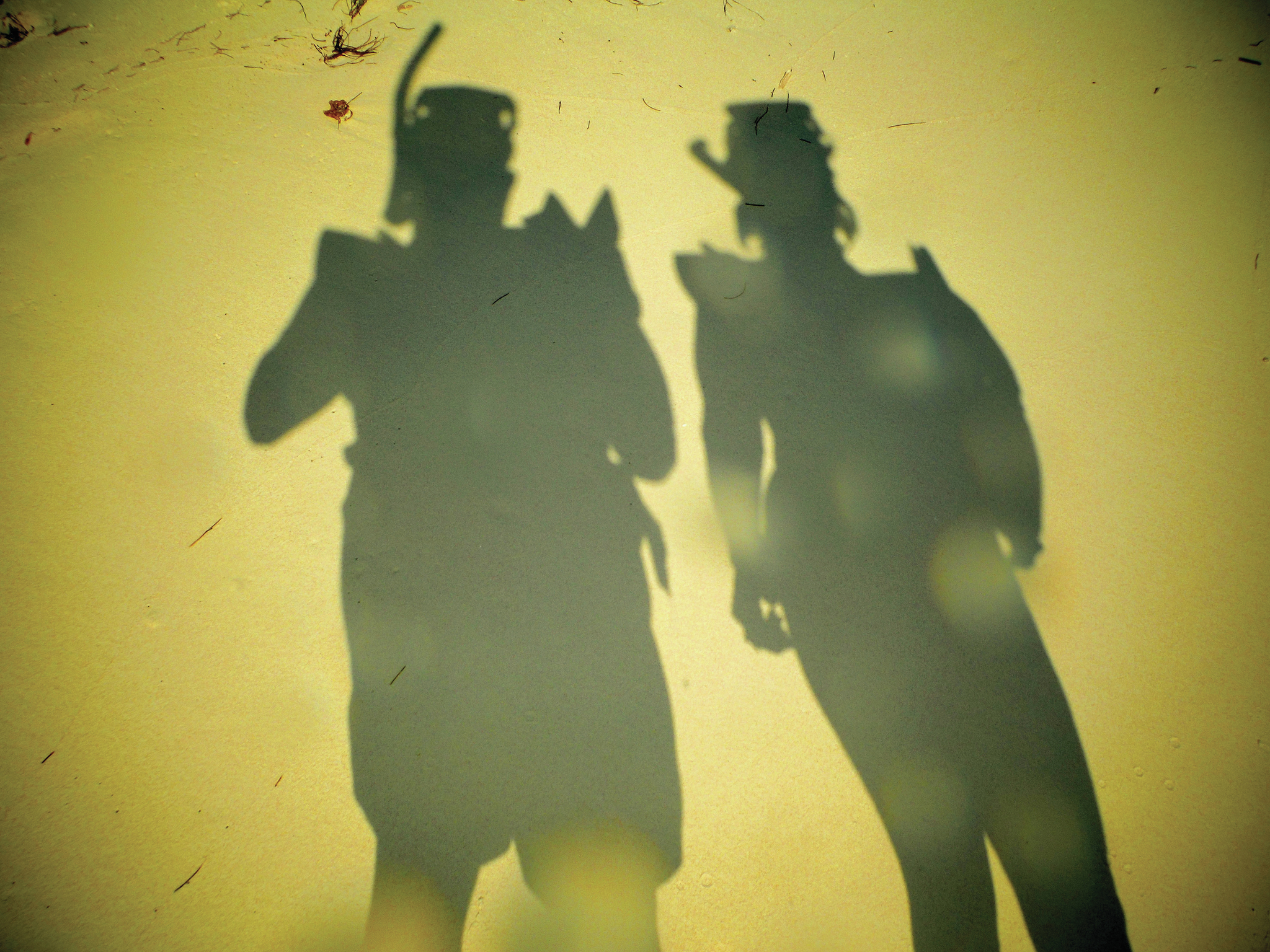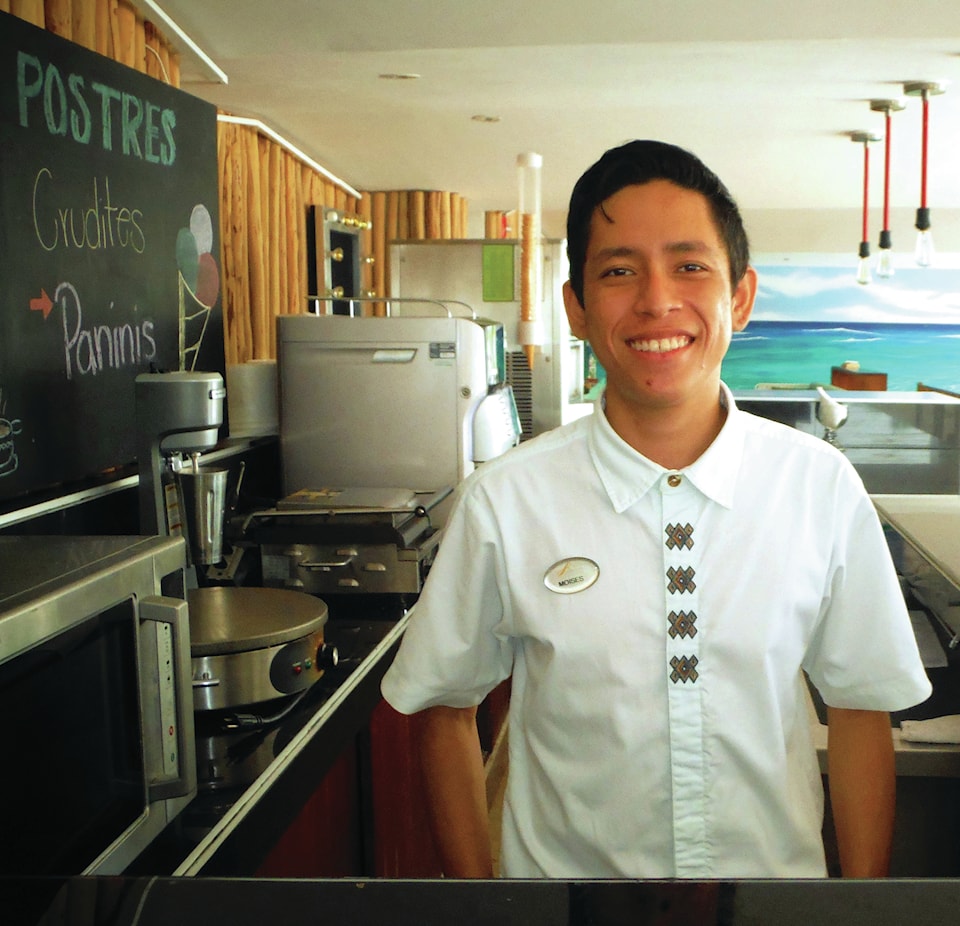One of life’s great experiences is snorkeling in a warm ocean, peacefully drifting over a coral reef surrounded by colourful tropical fish. And one of Earth’s finest snorkel sites is near the Island of Cozumel off the coast of Mexico’s Yucatan Peninsula.
Or at least it was until Hurricane Wilma hit in 2005. The most intense tropical cyclone ever to strike the Atlantic, Wilma pummeled the Yucatan, flattening buildings and killing scores of people. But the death and destruction was not limited to land. The churning storm surge also destroyed life under water.
Cozumel is situated along the world’s second largest barrier reef. The Great Mayan Reef stretches from Mexico’s Yucatan 1,000 km south to Belize in Central America.
When Wilma finally passed, resorts that formerly advertised “walk-in” snorkeling were suddenly left with ocean desert — broken chunks of dead coral laying in a watery grave. Until then Cozumel had been on the bucket list. Wilma moved it down a few notches.
There was a time when a Mexican all-inclusive was our go-to vacation; a cheap week on the Mayan Riviera where food was plentiful (if not particularly palatable) entertainment was non-stop — and best of all, the Corona flowed freely. But those days passed and we gradually moved on to more exotic — and expensive — vacations.
So my expectations were not high when we decided to go retro and check out the Fiesta Americana all-inclusive on Isla de Cozumel’s leeward coast. Would the snorkeling be good? Would the resort be serving up Montezuma’s Revenge for dinner?
It didn’t take long for all-inclusive nostalgia to kick in. The first day at the pool we watched a couple of hefty strangers drink themselves into a stupor and, before noon, pass out in the searing tropical sun.
While I am as big a fan of the swim-up bar as the next guy, we were here for the ocean experience. Cozumel’s currents are notoriously powerful, so that afternoon we walked up the beach half a kilometer, donned our gear and enjoyed a frighteningly quick drift back to the resort. Happily, a decade after Wilma, the reef is showing signs of recovery — tiny colourful fish darted in and out of small but healthy new coral formations.
The following morning I booked a drift dive with a local scuba operator. We motored out to Palancar Reef in Arrecifes de Cozumel National Park, jumped overboard, descended 20 metres and floated through the famed Coral Gardens. It was magical. This deeper reef was unaffected, with pristine red, green, purple and orange coral heads glowing brightly in crystal-clear water. And the sea creatures — sea stars, lobsters, small crustaceans and a multitude of reef fish — were everywhere.
One day we rented a jeep convertible for the obligatory circumnavigation of the island. We peeked in at some of the fancy resorts on the protected west shore before driving up Cozumel’s rugged windward side where rough seas wave in from the open Caribbean, pounding the unpopulated eastern coastline.
En route we stopped for a swim at Punta Sur on Cozumel’s southern tip. Warm calm waters greeted us. We snorkeled over a shallow sandy bottom, admiring large coral heads and schools of damselfish and wrasses. A puffer fish inflated itself defensively, comically. Then we drifted into a garden of sea fans. Acres of purple, pink and mauve giants swayed softly just below the surface. Miraculously, this tip of Cozumel had avoided Wilma’s random fury.
The ocean is not Cozumel’s only attraction. When a new ring road was built around the island, local leaders had the wisdom to leave the old highway in place, close it to motorized traffic and convert the road to pedestrian and bicycle use. Now cyclists from around the globe come every November to participate in the annual Cozumel Gran Fondo, nicknamed “the world’s most beautiful bike ride.”
The Fiesta Americana had a few rusty bicycles available for patron use and, although these old contraptions had been exposed to the briny sea air for years, still it was fun to pedal around the island. We engaged in our own Petit Fondo, from the Fiesta down the coast to Playa Palancar. Our clocking for the twenty-one kilometer return trip was a respectable 60 minutes – excluding the three and a half hours we spent at the Palancar Beach Bar.
The staff at Fiesta Americana was embarrassingly polite and helpful. Early on we became attached to young Moises who manned the coffee and pastry bar in the open-air lobby. By the third morning I had no need to order. While we made poquito talk en Español, he’d whip me up a double café con leche. Moises, eighteen, worked 10 hours a day, six days a week at the resort – for about $20 a day. He didn’t live on the island – too expensive. Every day he endured a ferry commute from the mainland. And yet I’m not sure when I last met a happier more positive person.
One morning I was feeling self-pity over some trivial e-mail. As Moises handed me my coffee, he asked if everything was okay. I felt like going back to our lovely ocean-view suite and giving myself a very hard look in the mirror – but instead I just ordered an extra helping of bacon with my scrambled eggs. The food at the Fiesta was really good – more than palatable.
So our nostalgic all-inclusive experience was a success – and a heck of a lot simpler and cheaper than organizing one’s own tropical tour.
And the entertainment? Awesome – particularly when the two chubby drunken fellows reappeared bashfully on day two, pale as ivory on one side, red as a Caribbean lobster on the other.
Gerry Feehan is a retired lawyer, avid traveller and photographer. He lives in Red Deer. See more of Gerry’s stories, pictures and video at gnfeehan.blogspot.com
Captions:
a couple of tired snorkelers heading back to the resort after a drift in Cozumel’s notorious current
a bed of giant sea fans eluded the destruction of Hurricane Wilma
Moises - a happy guy
Florence aghast - or jealous?

